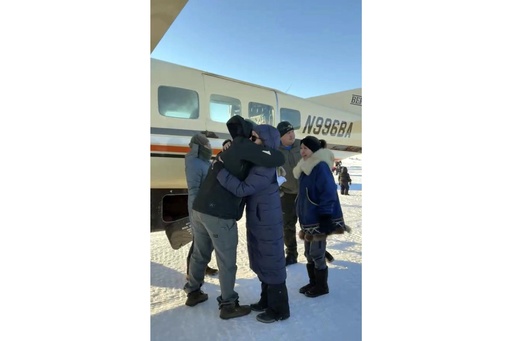
ANCHORAGE, Alaska — The commuter flight that went down on Alaskan sea ice last week, resulting in the death of all 10 people on board, was integral to a network of short flights that many in the vast and challenging terrain of the state depend on for essential activities, including medical appointments, work commitments, and shopping trips, as well as attending sporting events.
Among those aboard were two technicians en route to repair a heat recovery system critical for a local water treatment facility. A retired teacher was returning home from a mentoring session, while another passenger was traveling for a doctor’s visit.
Due to the state’s expansive area, which is so large that a postage stamp placed on a standard sheet of paper illustrates the distance one can cover by boat, car, or train, the travel options are extremely limited. Outside of the densely populated corridor stretching 360 miles from Anchorage to Fairbanks, approximately 80% of communities are cut off from direct road access.
During a press briefing in Washington, D.C., federal representatives emphasized the safety of flying in Alaska and noted recent improvements in the state’s aviation accident rates. Despite this, they acknowledged that residents’ concerns regarding infrastructure, like runway lighting issues and an unreliable weather monitoring system, need attention.
Flying in Alaska can be complicated due to its diverse landscape, which includes mountains, glaciers, lakes, dense forests, and vast tundra. Furthermore, the rapid shifts in weather can make conditions at local airports inconsistent. U.S. Transportation Secretary Sean Duffy remarked, “With extreme weather patterns in Alaska, reliable weather data is crucial.” He also highlighted the need for dependable telecommunications to enhance aviation safety and pledged to collaborate with lawmakers and other federal entities for improvements.
For many Alaskans, air travel is the only method of reaching the outside world, as noted by Dylan Blankenship from the state’s transportation department. He remarked, “While a mile of road allows for just a mile of travel, a mile of runway can take you anywhere.”
The tragic crash involved a Bering Air single-engine turboprop, which was en route from Unalakleet to Nome, a distance of about 150 miles. The wreckage was discovered on an ice floe in Norton Sound the following day after extensive search efforts. The investigation into the crash’s causes is ongoing, and with 10 fatalities, it marks one of the most devastating aviation accidents in the state in a quarter-century.
Those on board included Rhone Baumgartner, 46, and Kameron Hartvigson, 41, both traveling to maintain a critical system for the water plant, according to their employer, the Alaska Native Tribal Health Consortium. Another passenger, 34-year-old Talaluk Katchatag, was en route to receive medical treatment, while Carol Mooers, 48, a Unalakleet school counselor, was picking up students to visit colleges in Anchorage and Juneau, as detailed in a family-backed online fundraiser.
Liane Ryan, a seasoned teacher from Wasilla who had dedicated 27 years to education in the area, was in Unalakleet for a mentoring program aimed at assisting local teachers. The community where she once taught expressed their sorrow on social media, honoring her as a “pillar of joy and positivity” who made a lasting impact on her students and staff members.
Bering Air is a critical service provider, connecting 32 villages across western Alaska, with frequent flights from hubs in Nome, Kotzebue, and Unalakleet. “As we cope with this tragic event, our hearts are heavy with grief,” the airline expressed in a statement. “Our thoughts are with the families of those impacted by this incident.”
In the wake of the accident, the airline received an outpouring of support from the communities it serves. Residents of Golovin, a small Inupiat Eskimo village, met the pilot in the cold and windy weather after he landed, showing their appreciation for Bering Air’s service. With handmade cardboard hearts that read messages like “We love Bering Air,” villagers gathered to express their continued support.
“There were tears all around, including from the pilot,” resident Irene Navarro shared, recalling her live-streaming of the heartfelt gathering. “We just wanted them to know we are still here and will continue to support the airline.”

